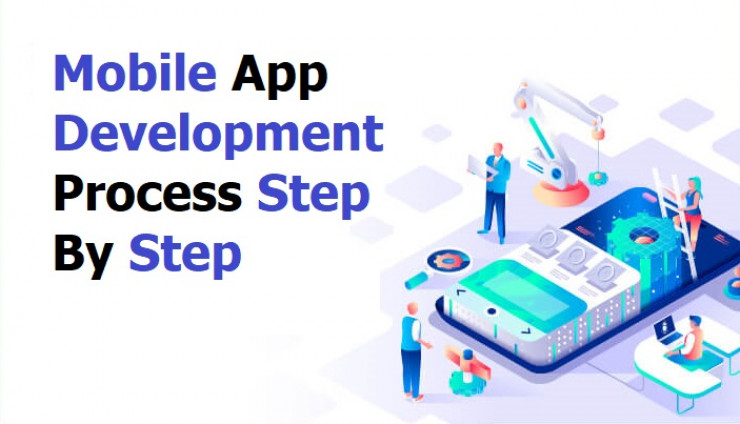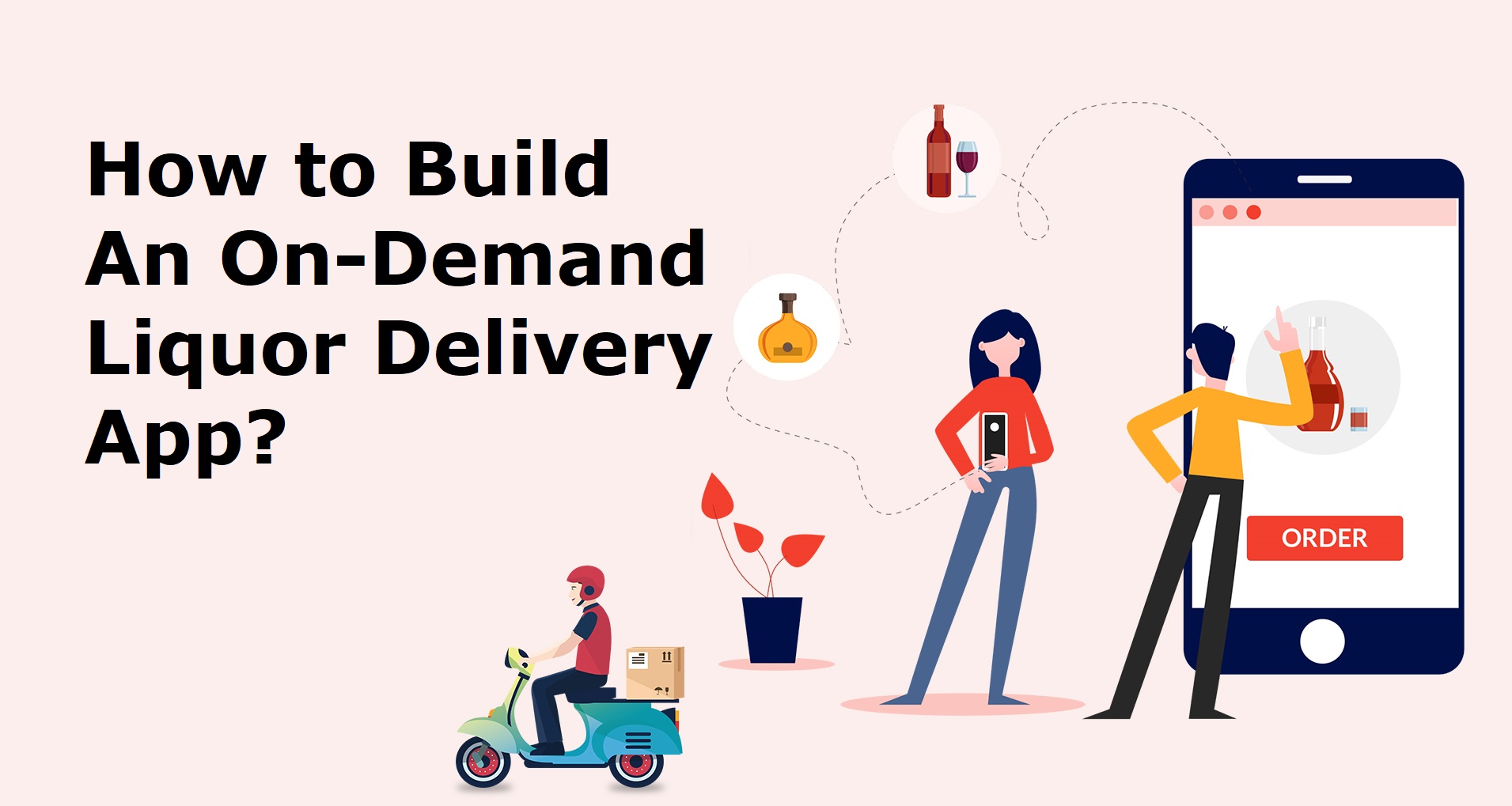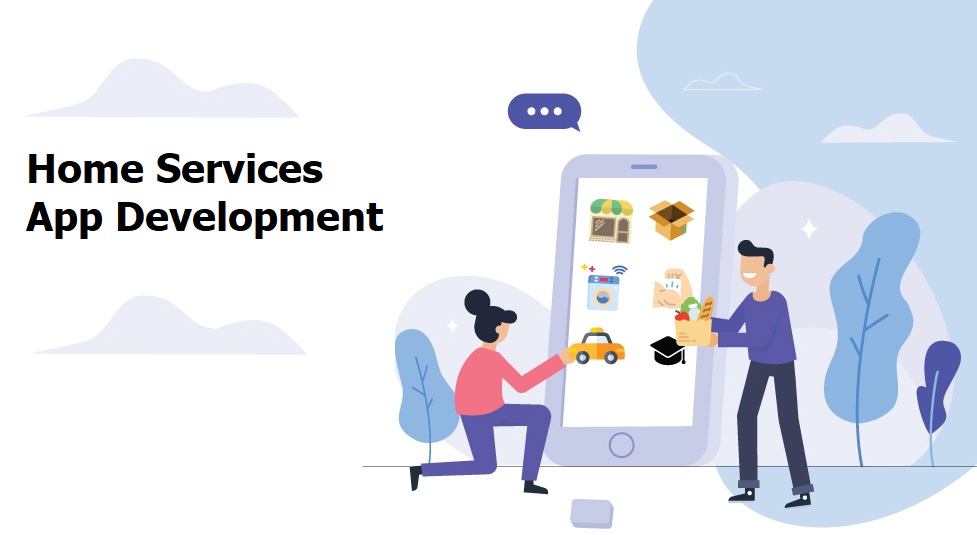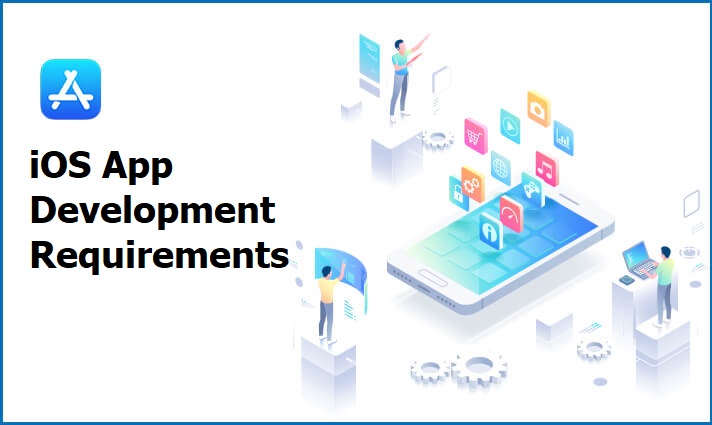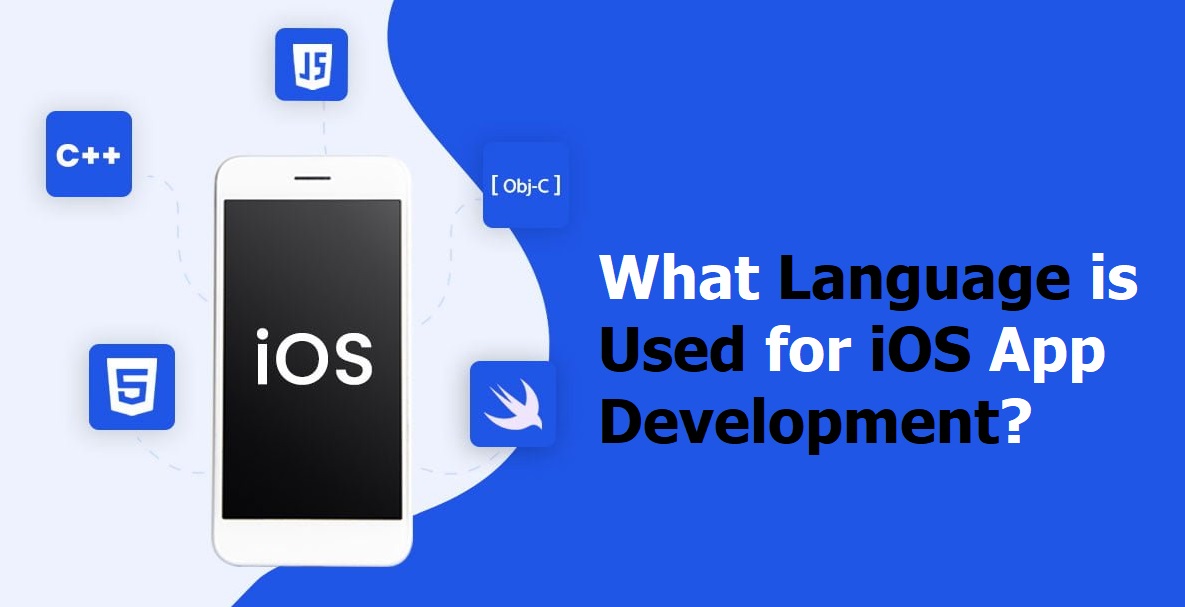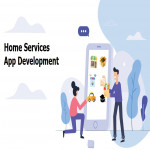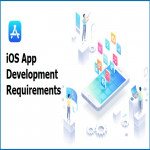The Mobile apps are excellent for every business and organization. Smartphones are nothing without apps because software is essential for operating mobile devices. Thousands of mobile apps like Facebook, Instagram, Whatsapp, and many more are available in several app stores. Mobile apps are preferable for making a business or service accessible with an automated environment. Also, mobiles can comfortably generate revenue via app stores and in-app advertising. Businesses are getting bigger and more popular through mobile apps. Businesses are bringing innovation by transforming their ideas to mobile applications, where the mobile app development process also comes with several changes with excellent approaches. Developing mobile apps can enhance your business successfully in this competitive business world. The cost-effective mobile app development process requires convenient methods to build the project successfully. While working with an app development task, the project scope and size are essential matters to keep in consideration. In this article, you are going to do an in-depth analysis regarding the usefulness of mobile app development. To find out more, Let's explore this comprehensive guide to know the mobile app development process step by step. Several stages are essential regarding the development process of mobile apps, where it will help many enterprises and businesses to understand the entire mobile app development process comfortably.
The Significant Stages of Mobile App Development
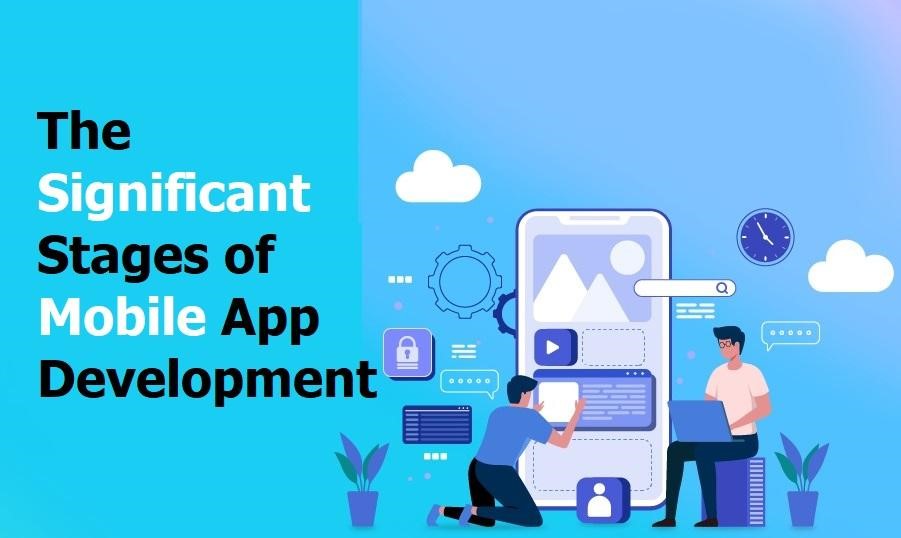
A development process or project involves several crucial stages to complete conveniently. It is necessary to follow a beneficial guideline to make the entire working process worth it. However, the complete mobile apps development process requires a convenient process, which helps to achieve the initiative's success of a company.
However, the significant stages of mobile app development are;
Documenting Ideas
Marketing Research & Strategy
Project Wireframe
Selecting Technology
Development Phase
Testing Phase
UI & UX
Launching Beta Version
Launch & Post Launch Activities
These are the effective stages of the mobile app development process. An effective mobile app development process needs to follow these phases. Here, we are going to do an in-depth analysis regarding all these steps.
Documenting Ideas
Data documentation is essential to generate ideas. Therefore, you need to confirm all the data regarding the android app development process. It is also necessary to confirm all the information before you move to the planning process. Here, you may need to answer several questions to ensure that you are on the right track. Because of this strategy, the idea is worth investing time and effort. For generating the ideas comfortably, it is essential to follow the following factors below.
App Objective
Target Audience
App USP
Competitor Analysis
App Investment
App Marketing
App Objective: It is essential and one of the fundamental questions to know the mobile app objective. Here, you need to understand why you want to build a mobile app? Is that necessary for your business? What are changes will come after the development? Are all your ideas appropriately fit as per the company’s target audience needs? Also, you need to keep a clear idea that do you have enough resources to promote it?
Target Audience: Another essential factor is the target audience. It is essential to identify that who are the target audiences regarding this business. Also, you need to keep a clear idea about the potential users.
App USP: App USP is a technical factor of mobile app development. This stage requires well-rounded data regarding the app features. It is crucial to evaluate all the essential features of the mobile app development project. In this stage, it is also necessary to come up with the core appeal of the app. This stage requires a convenient range of analysis regarding the core features and programs of the development project.
Competitor Analysis: Competitor analysis is a significant factor. Here, you need to understand who is your competitors regarding this project. The competitors can be one, two, or more than that. While analyzing them, it is necessary to discover that do they have the same application regarding their business. If it is yes then, it will be more convenient for you to solve the problem effortlessly. Whether the answer is no then, it will be splendid news for you to stay one step ahead of them.
App Investment: The development process of a mobile app requires money. You have to spend your money, time, and effort to develop an app comfortably. Therefore, investment is crucial for every mobile app development project.
App Marketing: The marketing strategy of an app requires an extensive range of analyses, and it will help in making the app development project successful. Also, you need to keep in mind when and how you are going to promote your app to achieve successful feedback. Another thing you need to identify is what will be the promotional strategy for your upcoming first 500-users.
Marketing Research & Strategy
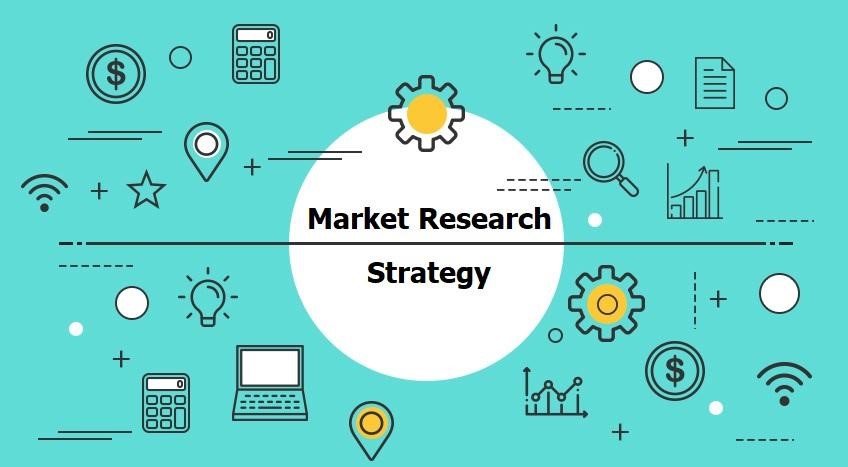
Marketing research is another essential factor in the mobile app development process. It helps to make the right strategy to come up with a nice startup. The market research of a project will help to evaluate the entire development process. The marketing research of the development stages shows the ultimate demand or the interest of the market. According to the market research, you need to modify your ideas with a clear list of requirements, which can help you prioritize the work. Marketing research is crucial to your mobile app development journey. There are some essential steps to follow to do the market research right away.
However, the essential marketing research steps are;
Define Objective
Prepare Survey
Portion Identification
Directly Conversation with People
Informative Survey
List the Market Competitors
Define Objective: Defining the objective of your business is crucial in the stage of marketing research. It helps to define the objective of the customer persona. It will also help to evaluate the process as per the consumer's demand.
Prepare Survey: Preparing a convenient survey is also crucial for marketing research. You have to prepare a suitable analysis as per the formulations of research survey questions. The preparation of the research survey questionaries is essential to evaluate effective marketing research.
Portion Identification: You have to identify a portion of that persona to engage the audience efficiently.
Directly Conversation with People: Direct conversation with people is an effective idea of marketing. Whenever you go somewhere, talk to people in every part of your target consumer’s business.
Informative Survey: It is necessary to keep the survey informative. The instructive survey will help to understand the project conveniently.
List the Market Competitors: Making a list of the market competitors is significant for a well-established business. The competitor's checklist will help to identify the business perspective conveniently. Regarding the list of your market research, it is also necessary to do a desk survey for better evaluation.
All of these strategies will help you to do extensive marketing research. By following all these, you can maintain a better understanding of the consumers with the transparent ideas of your competitors. You can also assess your product or service carefully, including the defined solutions to reach the customers conveniently. Additionally, you can identify the business opportunity regarding the discoverable feature list and demands of the users.
Project Wireframe
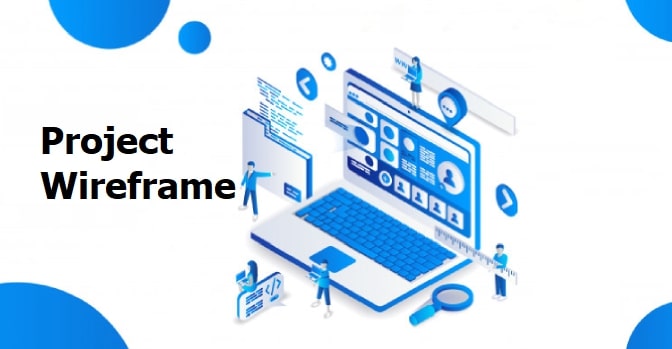
Making the mobile app development project wireframe is essential to complete the working process conveniently. Once your development or all the ideas are ready, you are allowed to put shape your ideas into wireframes. A wireframe of a development project is considered as a blueprint of your mobile app. It shows the exact design of a development app as well as the functionalities. Because of this, the working project will be more understandable to look at and work with the mobile app comfortably. The mobile app wireframe provides articulation theory to the software engineers team to follow the process comfortably. Additionally, it will help the software developers to use it as a reference, or you can follow this as a guidebook, which gives proper guidelines. At the beginning of making wireframes, the user flow map is essential, where all the steps are the necessary aspect to achieve a specific goal of your mobile app.
Here, we are going to provide some essential suggestions and steps in building your mobile apps’ wireframe.
Requirement Analysis
Wireframe & Design
Development
Testing
Deployment
These are steps to follow for preparing a convenient range of wireframes. It is necessary to choose a frame before creating a wireframe that comes with the dimensions of the actual device that you design. The first frame of your design needs to act as a natural restraint, where it will discourage you from adding too many segments to one screen. The second thing of a frame is necessary to show that it is generating an illusion of actual frame design. There are several recommended sizes of iOS mobile devices, which start from 5.5-inch to 5-inch, including 4-inch and 3.5-inch.
The Using Patterns of the Design
Using design patterns is a familiar and essential aspect of UX design. Regarding the familiarity of design, it is necessary to use a typical design. Whenever a user finds a familiar design with the user interface elements, they comfortably get engaged with the product and rely on their experience when interacting with this new product. The native design patterns can simplify the design process of developing a typical experience for the designers for a better understanding of the project for both Android and iOS Mobile App. Also, the design patterns can play a vital role as a reusable content block, which is possible to resolve several common issues.
Content Sales
It is also necessary to ensure content sales. You need to check whether your screen design will look good on different devices or not. Therefore, screen sizes are essential to select carefully. Different phones feature different sizes, and you need to make sure that your content will look good on different sizes of the screen, where it gets easily adjusted as per the device size.
You can use the following tools for a better adjustment, which will help you to build convenient mobile app wireframes.
InVision
UXPin
Balsamiq
Fluid UI
Proto.io
JustinMind
Prott
Figma
For selecting or doing, the best adjustment, all of these tools are excellent to work comfortably. All of them have their self-quality to provide or generate convenient mobile app design ideas. Also, some of these tools are excellent for several free campaigns and creating prototypes.
The Design Order with Design Sprint
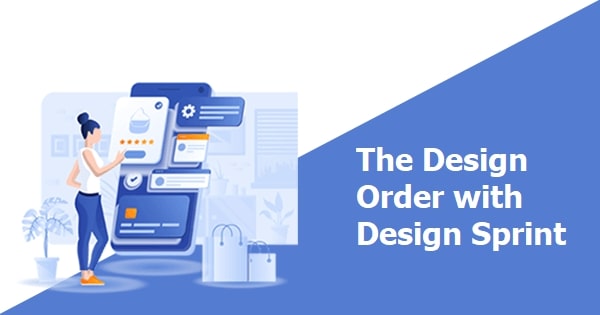
While finalizing the wireframe, you may be confused regarding the project and its design, whether you are making the right design decisions or not. The layout iOS would be a better option to choose, or some of the other features should be added regarding the project requirements. However, the design sprint of a project is a proven scientific process of collaborative brainstorming, which helps to assess several features to build the first and other ones to eliminate. This process dramatically saves the app development time and money by solidifying concepts of the project, where the project enhances to build the groundwork for wireframing and designing.
The Significance of Design Sprint
The design sprints are valuable and necessary for every stage of the mobile app development project. The design sprints are essential while working with a new project or creating a new product or service. It also plays a vital role while redesigning the existing product or service. The design sprints make the working process convenient and faster and help in adding new features to the existing product or service.
For providing in-depth knowledge of the design sprint, it is necessary to highlight its significant steps. However, the essential steps are;
Understand
Define
Diverge
Decide
Prototype
Validate
Understand: First of all, you need to understand the design and figure out the design problem comfortably.
Define: Secondly, you need to define the key strategy of the development project to focus on this conveniently.
Diverge: The diverge nature is also essential to ensure the rapid development of as many solutions as possible.
Decide: It is also crucial to choose or decide the best ideas ever to ensure optimum working performance.
Prototype: You need to build a prototype as early as possible, no matter if that becomes messy.
Validate: For validation, you need to get user feedback to identify what works and what does not.
All of these stages are significant in the design sprint. You need to follow these steps regarding the suitable solutions for the design sprints.
Choosing the Platform
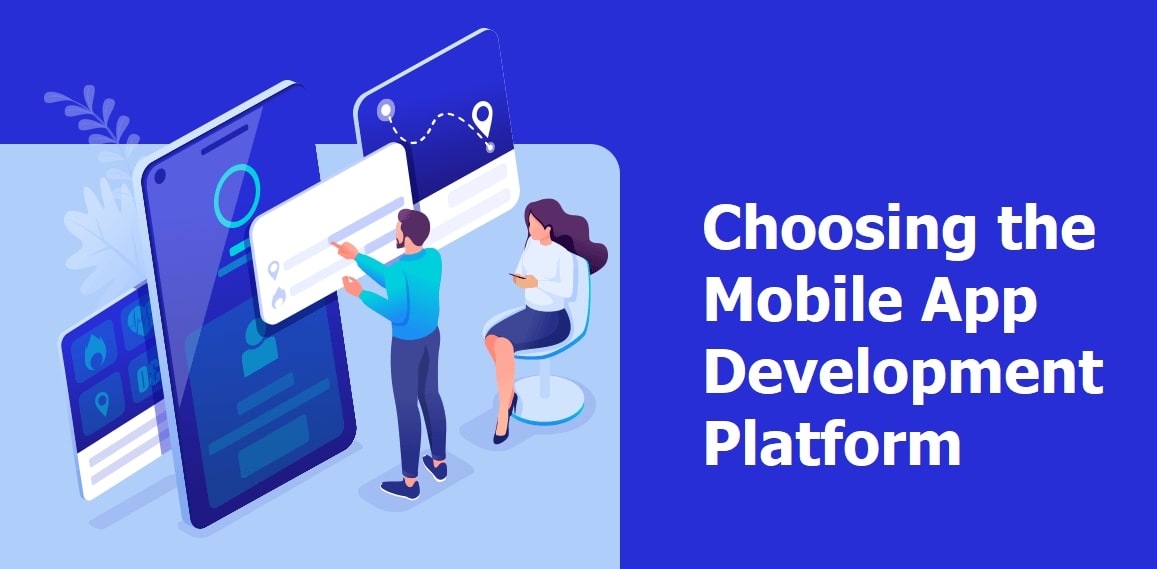
The platform selection is another crucial stage of the mobile app development project. Here, you need to make the right decision among all the platforms of the mobile app development phases. However, in the sector of mobile app development, there are three options available to select the suitable one comfortably.
However, the platforms are;
Native App
Hybrid App or Cross-Platform App
HTML5 Web App
These are the platforms to choose from for developing mobile apps. Different platforms come with different options and availability to work spontaneously.
Native App: The native platform for developing native mobile apps is excellent. Also, it is an outstanding platform to use, which supports the development of language and tools, where the developers can interact smoothly to develop a mobile app in a specific platform like android and iOS.
Hybrid App: The Hybrid platform is well-known as the Cross-Platform app. This type of platform is preferable for the single mobile app development on HTML5, which can run on multiple platforms. These types of apps are not directly installed or downloaded from all the app stores like native apps.
HTML5 Web App: The HTML5 Web App is a convenient technology, where these are optimized as mobile websites, which appear as a mobile app and run on the mobile browser. The web applications are convenient and provide the best performance ever. However, this platform is also well-known as an independent platform, where it lags to have a superior user experience and functionality. If you do not intend to upload this app to the app stores, then it is preferable to develop apps using this platform, where you will not expect or motivate the end-users to download the app.
Development
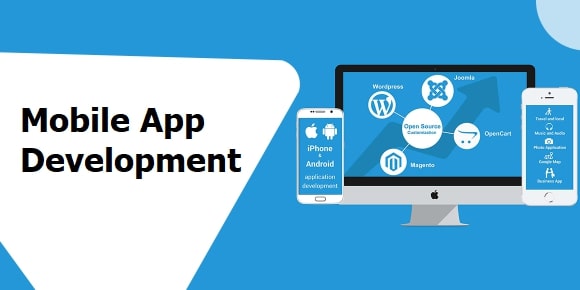
Mobile app development is the stage to give a proper structure to your project. This phase is preferable after the completion of the app design, where it passes the test usability. You can start the actual development process of a mobile app when the design passes the test of usability. However, the mobile app development process requires coding and other functional working activities. This stage phase also requires multiple activities to establish an excellent mobile app development environment, where it requires different parts of the coding throughout the development process. Also, you will create or develop a mobile app that can be installed and tested for a better working process. The development process of an app also requires programming and configuring. The appropriate development process of a mobile app depends on the three main aspects of evaluation.
The three main stages of development are;
Back-End
API
Front-End
These three stages are essential where the developers can work comfortably, and you can expect the developers to provide interim builds where you will be able to run the app on your device itself.
Back-End
The back-end is a crucial development stage of the mobile app. This development stage is associated with the database and server technology, where these two objects become imperative as the supportive functions to the mobile app by connecting to a network. However, if you are using an existing backend platform, the configurations and changes of the developing app could be required to support the desired mobile app functionality. While developing the server-side object, this stage must be configured and tested with the other essential components of the mobile app.
API
API is the application programming interface. The API configuration of a mobile app is necessary for every mobile app development. However, this stage comes with a set of practices, protocols, and tools, and it allows the developers to develop mobile apps comfortably. Moreover, this programming interface is also preferable for the mobile app development process, which is used when programming GUI components.
Front-End
The front-end development of a mobile app is also essential to complete the working process successfully. This phase is also well-known as client-side programming, where the end-users will interact with the app. However, this development stage also involves several essential things to implants like structure, design, animation, and behavior. These things are also necessary to see on the screen or appear on the screen while opening or developing websites, web applications, or mobile apps. The frontend development phase of a mobile app requires a good range of development processes.
Mobile App Test and Improvement
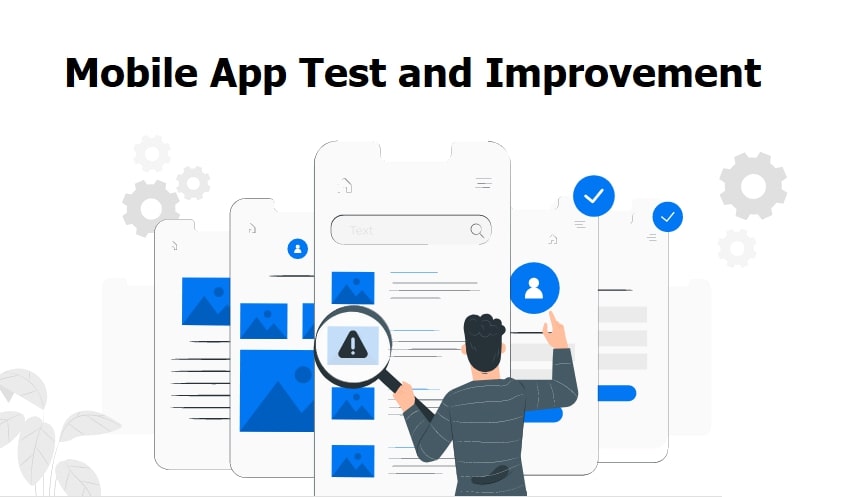
After the compilation of the development process of your mobile app, it is necessary to do the test and improvement of your development project. You need to review the entire coding of the development project, which will help you to make sure that there are no major bugs left at the end of your project.
However, there are several kinds of benefits of checking or reviewing your code.
While reviewing the development code, 20% of auditing is become completed with it.
It also reduces the time and cost of the development project.
The reviewing process also helps to enhance the collaboration.
You can also do an excellent range of adherence to coding standards and conventions.
You will also gain the ability to become a mentor to the less experienced software engineers.
This also enhanced the sustainability and maintainability of code.
Sharing knowledge with team members is one of the best benefits of reviewing your code.
Also, more than 90% of your app quality gets to an improved position.
These are the beneficial sides of reviewing your code, where the quality of your app easily gets improved, and it saves time, money, and your sanity. Once you find your app fully functional, now it is time to do the final test usability with other colleagues or development partners. Here, you may find some of the bugs that you overlooked, but here also you can apply final tweaks to the product conveniently.
Several Stages of Mobile Application Testing
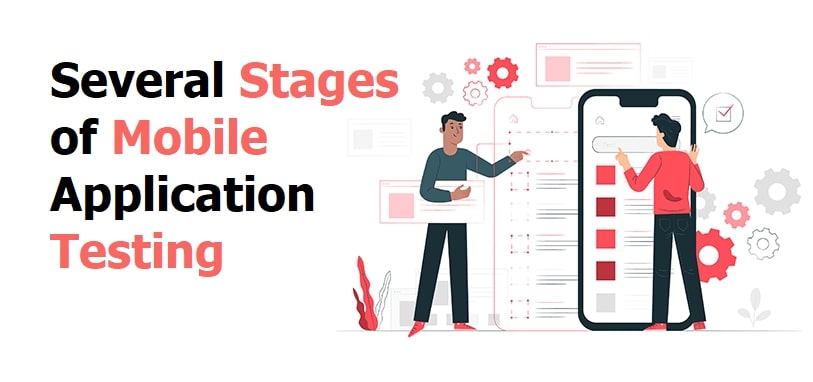
You need to follow several stages of mobile app testing to develop a successful mobile app. Various mobile app testing stages are necessary to do the app development efficiently.
Documentation Testing
Functional Testing
Usability Testing
Compatibility Testing
Performance Testing
Security Testing
Certification Testing
These are the essential testing segments to follow to develop a high-end mobile app. Once all the testing formations are fully completed, your mobile app will be booming and in a higher position to generate successful outcomes.
Documentation Testing
No matter what type of mobile app you develop, nothing is possible to develop without documentation. At the beginning of your mobile app, it is necessary to keep all the documents clear regarding the entire working process. This phase is also well-known as the preparatory stage, where the mobile app development strategy starts with screen layouts, navigational charts, and other essential aspects. These aspects are also obscure in the design. It is the stage where you need to check the entire wanted features regarding the wholeness and discrepancy. Here, the developers can easily find out all the discrepancies efficiently to resolve them before the main development process starts.
Functional Testing
Secondly, you need to do functional testing, which makes the mobile app more responsive. As per the industry requirements, it is essential to do the test to check the mobile app responses. For performing the functional testing of the app, it is necessary to keep some essential components in mind. For functional testing, you can use all these tools, for instance, Selendroid, Appium, Robotium, and Ranorex.
However, the essential components are;
Business Functionality: Using the business functionality is suitable for several businesses like Net banking, social networks, education, ordering, and other essential facilities like ticket booking, industry, and so on.
Target Audience: Evaluating the target audience is also necessary as per the entrepreneurs, companies, students, etc.
Distribution Channels: The distribution channel means the app store like Google App Store, Direct delivery, and so on.
The Usability Testing
Usability is an essential part of mobile app testing. This stage of testing ensures that the developed app offers convenient performance to all the customers and generates an intuitive interface according to the industry standards. However, usability testing of an app is judged by three essential criteria satisfaction, efficiency, and effectiveness. For usability testing, you can use these tools, for example, User Zoom, Reflector, and Loop.
UI Testing
The user interface testing is also essential to make sure your graphical interface is efficient that meets all the needed specifications. It will also ensure to come up with a responsive user interface. For UI testing, FitNesse, Jubula, iMacros, LoadUI, and Coded UI these tools are convenient to use.
Compatibility Testing
Compatibility testing is also essential for making or developing quality mobile apps. Therefore, configuration testing is crucial as per the device size, version, screen resolution, hardware, and other essential aspects. However, compatibility testing is also required from OS configuration to browser configuration, including the device, network, and database configuration. For compatibility testing, BrowserStack, Browsera, Cross Browser Testing, Litmos, Ghostlab, Rational ClearCase, all these tools are excellent to use.
Performance Testing
Performance testing is also essential to evaluate the mobile app performance. For ensuring the best performance of an app, you have to do the app stress and load testing. This stage also requires stability testing, volume testing, and concurrency testing. By doing all these processes, app performance testing will be completed comfortably. The NeoLoad, Apteligent, and New Relic, all of these tools are preferable for app performance testing.
Security Testing
The essential part of app testing is security testing. Here, you need to validate the security concern of your developed mobile app. It is necessary to do security testing to make the app risk-free. This stage also helps to keep the mobile app secure from hackers, viruses, protection, and unauthorized access to secure all the sensitive data comfortably. For security testing, you can start from the Retina CS Community to OWASP Zed Attack Proxy and Veracode, Google, including Nogotofail and SQL Map.
Certification Testing
The certification testing of your mobile app is also essential. The good certification testing of the mobile app will comfortably meet industry standards and licensing agreements regarding the terms of use and other essential aspects. It is also necessary to meet the standard and all the requirements of the app stores like Google Play, iOS App Store, and Windows Phone. The certification testing will be done while submitting the mobile app.
Launch A Beta Version
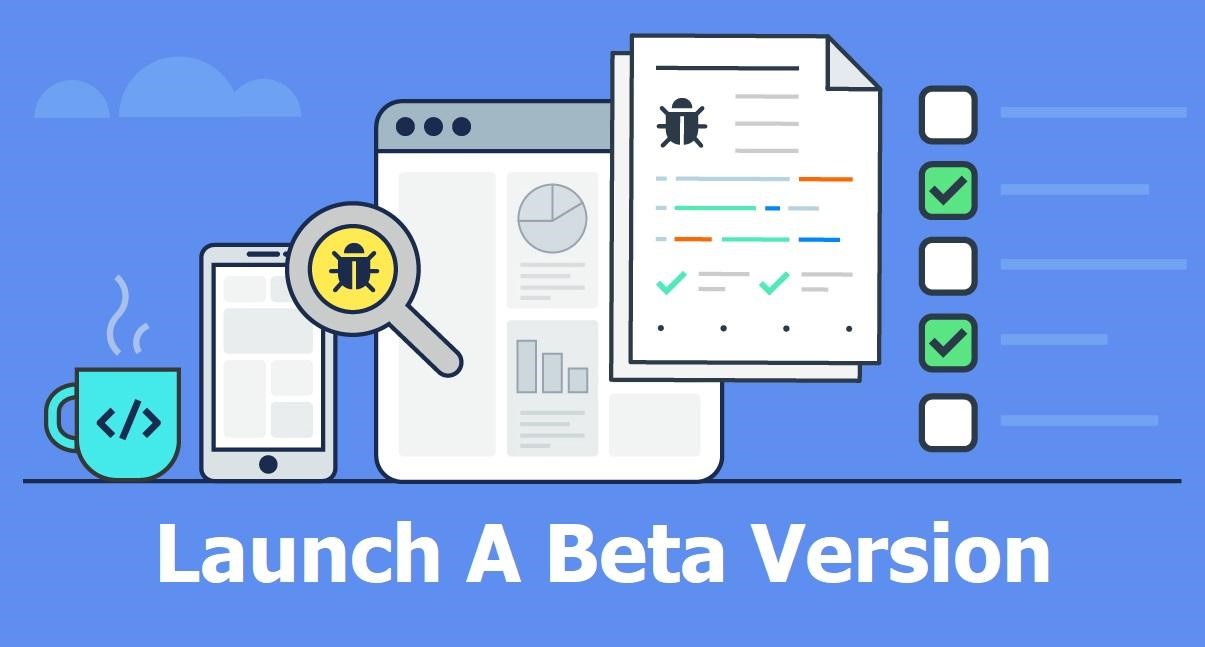
It is important to launch the beta version of the mobile app to attract early adaptors. It is also an essential step to take your mobile app mainstream. However, the early adaptors are beneficial to achieving the best feedback on your app's pros and cons. The experience and rating of early adaptors will help you understand the acceptance of the developed app. It will also help you understand the demand of the app comfortably. This type of word-of-mouth marketing strategy will boost the app’s reputation faster and help the admin to achieve even more users. Additionally, launching the beta version will be more convenient to make the mobile app more responsive.
Launching the Mobile App
After the compilation of the beta version of the mobile app, you can move to the final launching section of the app. Because here you have completed all structure of your application from designing to development and testing. After this, you can publish the app by following the effective guidelines of selected app stores.
For submitting the app to the apple store, you have to create an iOS profile and distribution certificate to the apple store. It is also essential to create an iTunes connect record for your app. Then, you need to archive and upload the mobile app using Xcode. You need to configure the metadata of the mobile apps with other details regarding your iTunes connect record. Then, you can submit your app for review and check on the update status.
You can also submit your developed mobile app to the Google Play Store. In this stage, it is necessary to ready with the mobile app information. After this, you have to upload the APK file, including other bundle files regarding the app. You need to set up the app's content rating. Also, you need to set the pricing with the distribution plan. After this, you can publish your app to the play store for review and confirmation.
Post Launch Activities of Mobile App
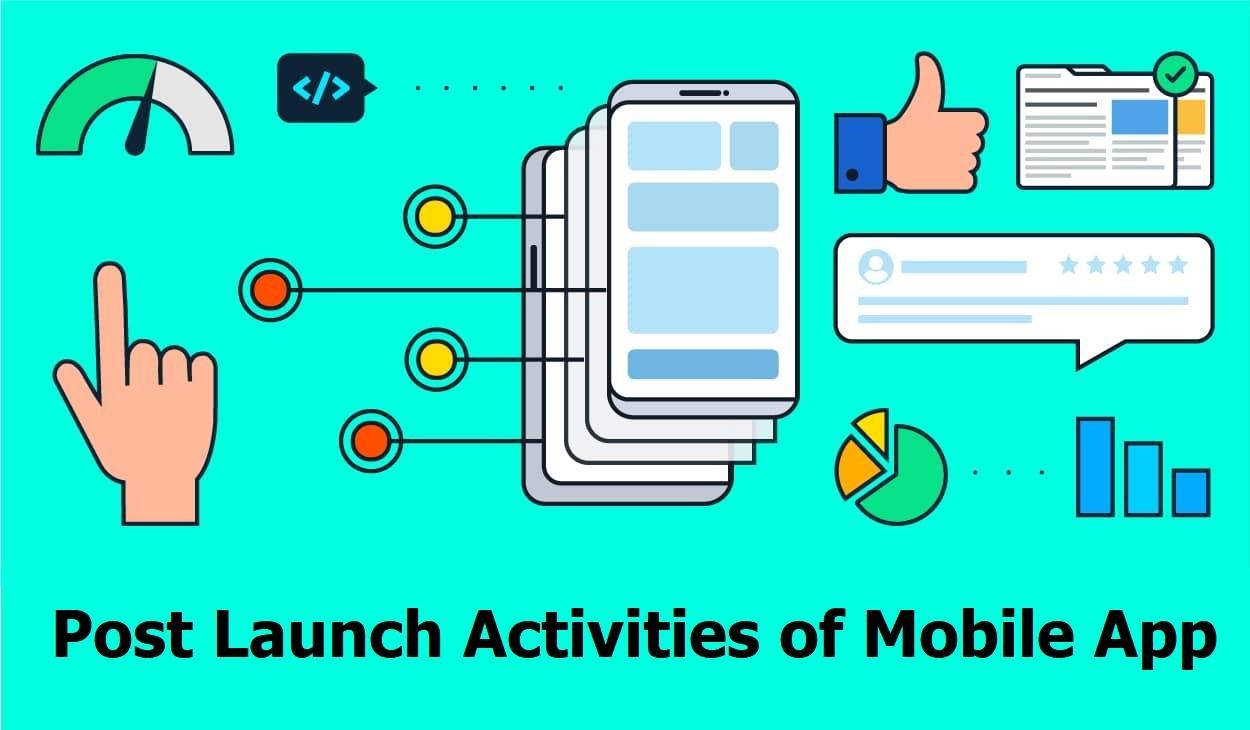
It is also necessary to the post-launch activities of your mobile app to maintain optimum performance. You can also start the crucial stage of marketing to inform the people about your app. For spreading the app faster, you need to convince people to explore the app effectively. You can also make attractive and informative videos of your app functionalities to attract potential consumers easily. The social media platforms are excellent, where you can use all the digital platforms to attract customers all around the world. With all these strategies, the apps will be booming and deliver a glimpse to the people by highlighting the key features of the app and the necessity for life. Lastly, the post activities will help the mobile app to spread faster to the consumers.
Final Thoughts
No matter what type of mobile app you want to develop, all of these stages are mandatory to develop the app successfully. All of these stages are also overwhelming and tedious to ensure the best working process ever. Due to the advent of technology, everything is getting advanced day by day. All of the stages are rewarding for the mobile app development process if you do it in the right manner. You can do the mobile app development conveniently by following this step-by-step process. This mobile app development process is also acceptable for both startups and enterprises. We hope you find this article amazing and get all the essential information regarding the mobile app development process with all the other aspects. If you have any valuable information regarding the development phases, do not forget to share it with us.
